- Clone
- CTD4H8 (See other available formats)
- Regulatory Status
- RUO
- Other Names
- DNA-directed RNA polymerase II subunit RPB1, RNA polymerase II subunit B1, DNA-directed RNA polymerase II subunit A, RNA-directed RNA polymerase II subunit RPB1, DNA-directed RNA polymerase III largest subunit
- Previously
-
Covance Catalog# MMS-128P
- Isotype
- Mouse IgG1, κ
- Ave. Rating
- Submit a Review
- Product Citations
- publications
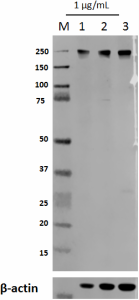
-

Total lysates (15 µg protein) from HeLa (lane 1), Jurkat (lane 2) and Raw cells (lane 3) were resolved by electrophoresis (4-12% Bis-Tris gel), transferred to nitrocellulose, and probed with 1:500 diluted (1 µg/mL) Purified anti-RNA Polymerase II Antibody, clone CTD4H8 (upper). Proteins were visualized by chemiluminescence detection using a 1:3000 diluted goat anti-mouse-IgG secondary antibody conjugated to HRP for the anti-RNA Polymerase II Antibody or 1:5000 diluted Direct-Blot HRP anti-β-Actin Antibody, clone 2F1-1(lower). Lane M: Molecular weight ladder. -

Total lysates (15 µg protein) from HT-29 (Human), UMR106 (Rat) and Raw264.7 (Mouse) were resolved by electrophoresis (4-20% Tris-glycine gel), transferred to nitrocellulose, and probed with 1:2000 (0.5 µg/ml) purified RNA Polymerase II antibody, clone CTD4H8. Proteins were visualized using chemiluminescence detection by incubation with HRP Goat anti-Mouse secondary antibody (Cat. No. 405306, 1:3000 dilution). Direct-Blot™ HRP anti-β-actin was used as a loading control (Cat. No. 643807, 1:8000 dilution). -

Western blot probed with anti-RNA Polymerase II antibody (clone CTD4H8) Lane 1 : Molecular weight ladder; Lane 2: BSA negative control; Lane 3 : HeLa cell lysate. -

Immunofluorescence of HeLa cells with (A) mouse IgG1, κ isotype control (Negative, Cat. No. 401402) or (B-D) RNA Polymerase II primary antibody (Clone CTD4H8). Alexa Fluor® 488 (Green) Goat anti-Mouse IgG (Cat. No. 405319) was used as secondary antibody. Nuclei were counterstained with DAPI (Blue, Cat. No. 422801). The image was captured with a 60X objective using KEYENCE BZ-X700 fluorescence microscope. Exposure time (Seconds) for (A) is 1/20, and (B-D) is 1/25. Concentrations for (A, B) is 4 µg/ml, (C) is 2 µg/ml and (D) is 1 µg/ml.
| Cat # | Size | Price | Quantity Check Availability | Save | ||
|---|---|---|---|---|---|---|
| 904001 | 100 µL | 203€ | ||||
RPB1 is the catalytic and largest component of RNA polymerase II, which synthesizes mRNA precursors and many functional non-coding RNAs. It forms the polymerase active center together with RPB2, the second largest subunit. Polymerase II (Pol II) is the central component of the basal RNA polymerase II transcription machinery. It is composed of mobile elements that move relatively to each other. RPB1 is part of the core element with the central large cleft, the clamp element that moves to open and close the cleft, and the jaws that are thought to grab the incoming DNA template. At the start of transcription, a single DNA template strand of the promoter is positioned within the central active site cleft of Pol II. Then, a bridging helix emanates from RPB1 and crosses the cleft near the catalytic site, which acts as a ratchet that moves the RNA-DNA hybrid through the active site by switching from straight to bent conformations during each neuocleotide addition. This promotes translocation of Pol II. Pol II moves on the template during transcription elongation. Elongation is influenced by the phosphorylation status of the C-terminal domain (CTD) of Pol II's largest subunit (RPB1), which serves as a platform for assembling factors that regulate transcription initiation, elongation, termination, and mRNA processing. It can act as a RNA-dependent RNA polymerase when associated with small delta antigen of Hepatitis delta virus, being able to conform as both a replicate and transcriptase for the viral RNA circular genome.
Product DetailsProduct Details
- Verified Reactivity
- Human, Mouse, Rat
- Reported Reactivity
- Other species
- Antibody Type
- Monoclonal
- Host Species
- Mouse
- Immunogen
- The immunogen used was a peptide containing 10 repeats of the synthetic peptide YSPTSPS using chemically synthesized phospho-ser5.
- Formulation
- Phosphate-buffered solution.
- Preparation
- The antibody was purified by affinity chromatography.
- Concentration
- 1 mg/ml
- Storage & Handling
- The antibody solution should be stored undiluted between 2°C and 8°C. Please note the storage condition for this antibody has been changed from -20°C to between 2°C and 8°C. You can also check your vial or your CoA to find the most accurate storage condition for this antibody.
- Application
-
WB - Quality tested
ICC - Verified - Recommended Usage
-
Each lot of this antibody is quality control tested by Western blotting. For Western blotting, the suggested use of this reagent is 0.5 - 1.0 µg per ml. For immunocytochemistry, a dilution range of 1:100 - 1:200 is recommended. It is recommended that the reagent be titrated for optimal performance for each application.
- Application Notes
-
This antibody is effective in immunoblotting, immunoprecipitation and ELISA. It can also be used in chromatin immunoprecipitation assays.
The antibody CTD4H8 recognizes the C-terminal repeat of the largest subunit of RNA polymerase II from HeLa and S. cerevisiae cells. This antibody recognizes both the phosphorylated and unphosphorylated forms of the RNA polymerase II.
Based on sequence identity, this clone is liable to react with a broad range of species.
Clone CTD4H8 is also known as 4H8 or CTD 4H8.Predicted MW is ~ 217 kD, Observed MW is on WB gel is ~240 kD
-
Application References
(PubMed link indicates BioLegend citation) -
- Kristjuhan A, et al. 2002. Mol. Cell. 10:925.
- Charos AE, et al. 2012. Genome Res. 22:1668. (ChIP)
- Rafalska-Metcalf IU, et al. 2010. PLoS One 5:e10272. (ICC) PubMed
- Product Citations
-
- RRID
-
AB_2565036 (BioLegend Cat. No. 904001)
Antigen Details
- Biology Area
- Cell Biology, Signal Transduction, Transcription Factors
- Molecular Family
- Nuclear Markers
- Gene ID
- 5430 View all products for this Gene ID
- UniProt
- View information about RNA Polymerase II on UniProt.org
Related Pages & Pathways
Pages
Related FAQs
Other Formats
View All RNA Polymerase II Reagents Request Custom Conjugation| Description | Clone | Applications |
|---|---|---|
| Purified anti-RNA Polymerase II | CTD4H8 | WB,ICC |
| Alexa Fluor® 488 anti-RNA Polymerase II | CTD4H8 | ICC |
Customers Also Purchased

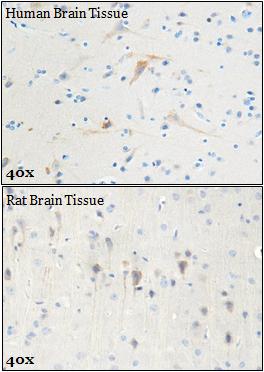
Compare Data Across All Formats
This data display is provided for general comparisons between formats.
Your actual data may vary due to variations in samples, target cells, instruments and their settings, staining conditions, and other factors.
If you need assistance with selecting the best format contact our expert technical support team.
-
Purified anti-RNA Polymerase II
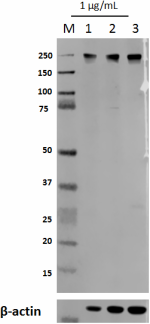
Total lysates (15 µg protein) from HeLa (lane 1), Jurkat (la... 
Total lysates (15 µg protein) from HT-29 (Human), UMR106 (Ra... 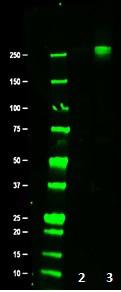
Western blot probed with anti-RNA Polymerase II antibody (cl... 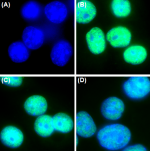
Immunofluorescence of HeLa cells with (A) mouse IgG1, κ isot... -
Alexa Fluor® 488 anti-RNA Polymerase II
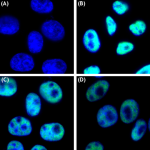
HeLa cells were fixed with 4% paraformaldehyde (PFA) for 15 ...

 Login / Register
Login / Register 




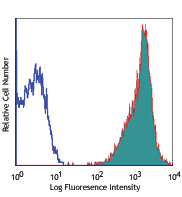




Follow Us